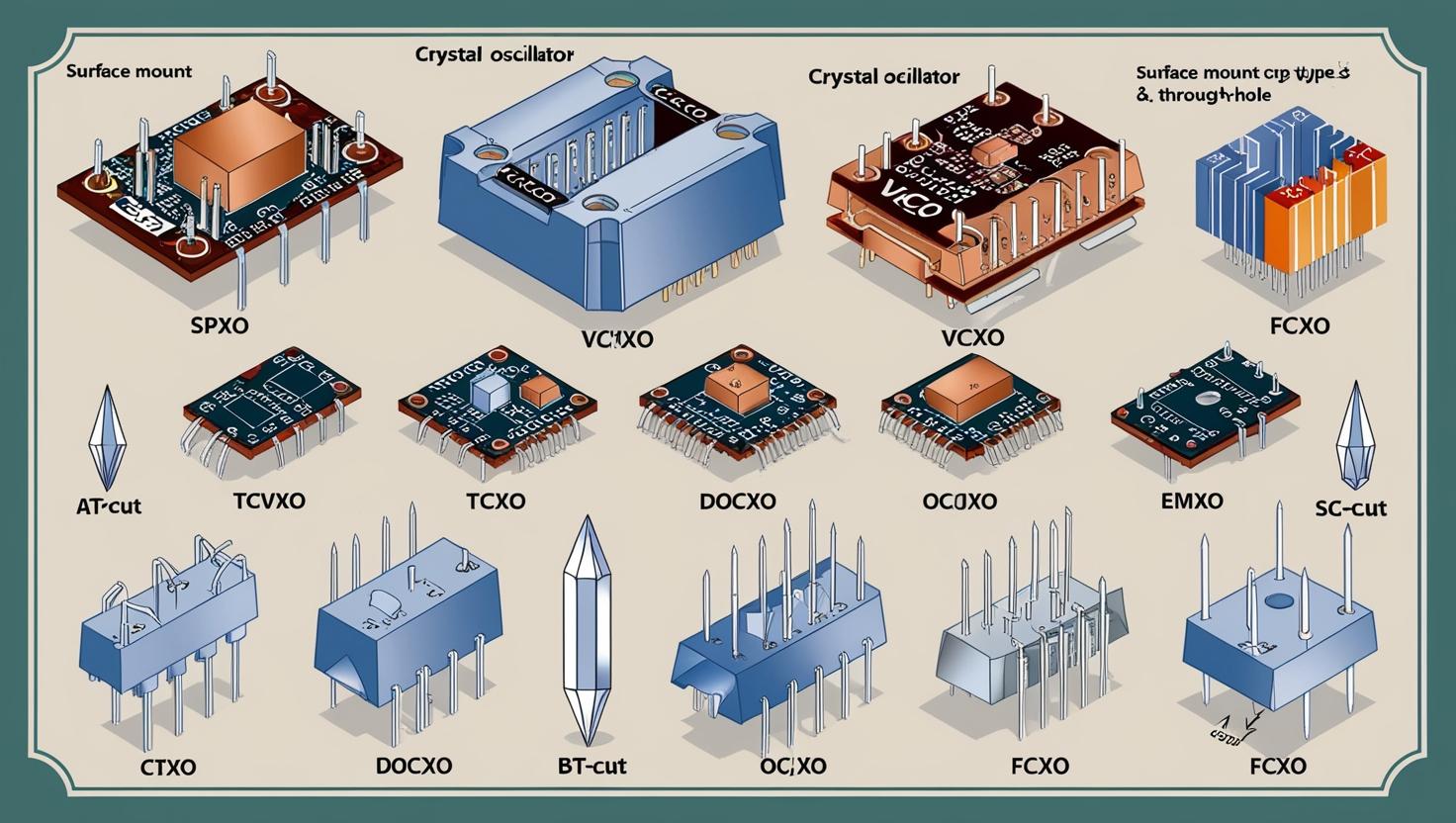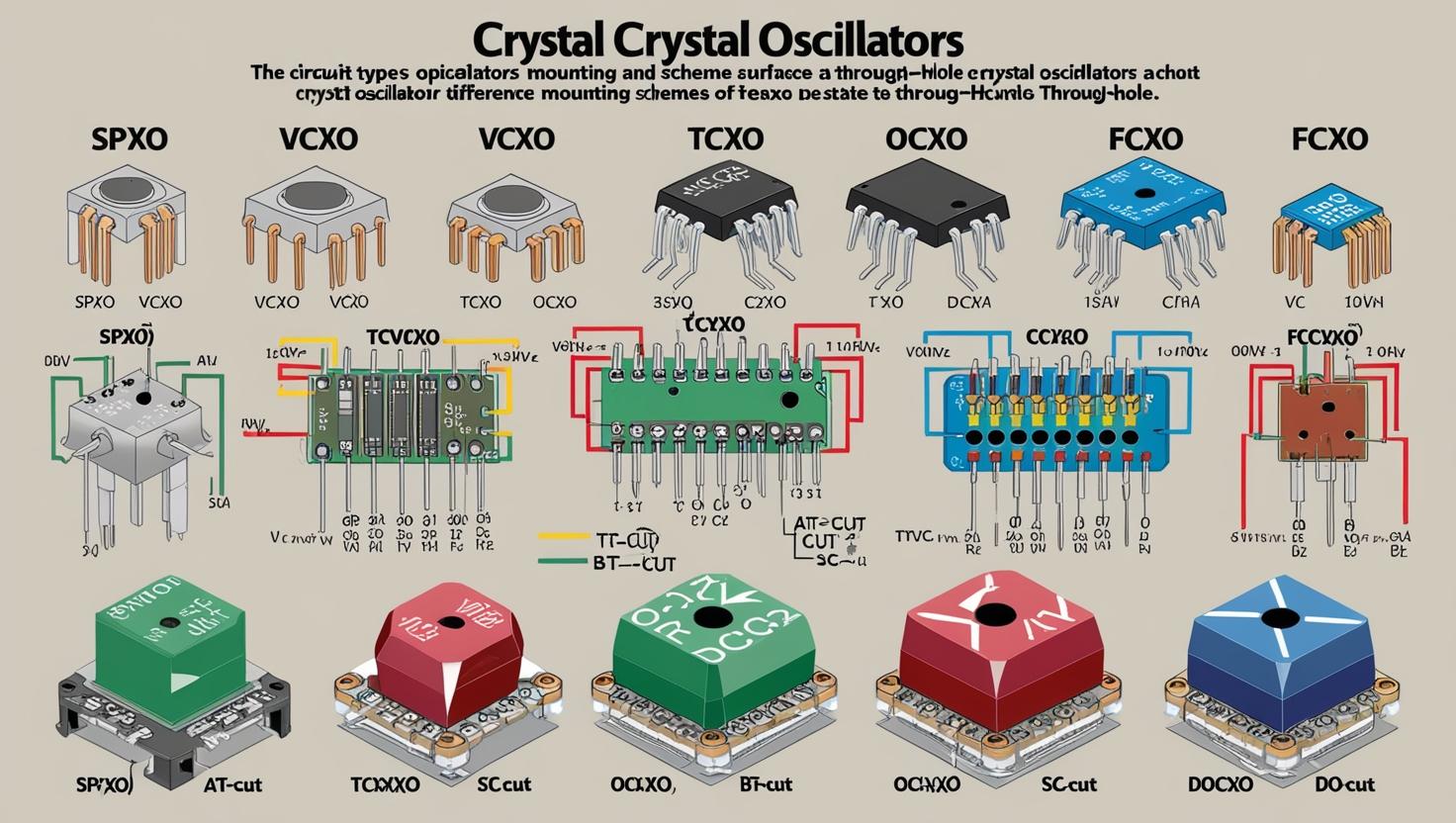In the world of high-precision technology, where stability and accuracy are paramount, Temperature Compensated Crystal Oscillators (TCXOs) play a crucial role. These sophisticated components are designed to provide highly accurate and stable frequency output over a wide range of temperatures, making them indispensable in numerous industries such as telecommunications, aerospace, automotive, and consumer electronics. As the demand for high-performance systems continues to grow, TCXOs are increasingly becoming the backbone of applications that require reliable, precise timing.
This article explores the TCXO industry, its growing importance, key applications, and the technological advancements that are shaping its future.

What Are Temperature Compensated Crystal Oscillators (TCXOs)?
A Temperature Compensated Crystal Oscillator (TCXO) is a type of crystal oscillator that uses temperature compensation techniques to minimize the effects of temperature variations on its frequency output. Traditional crystal oscillators experience frequency drift as temperatures fluctuate, which can lead to inaccurate timing. TCXOs address this issue by incorporating a compensation circuit that adjusts the oscillator’s frequency to ensure stable output over a wide temperature range, typically from -40°C to +85°C.
This temperature compensation enables TCXOs to deliver the high precision required for time-critical applications, ensuring that devices and systems relying on them remain synchronized and accurate even under varying environmental conditions.
Key Factors Driving the Growth of the TCXO Industry
The TCXO industry has witnessed significant growth in recent years, driven by several key factors:
1. Rising Demand for Accurate Timing in Communication Systems
With the rapid expansion of 5G networks and the increasing reliance on wireless communication systems, the need for highly precise and stable timing components has never been greater. TCXOs are essential in ensuring the synchronization of network elements, such as base stations, routers, and communication satellites. Their ability to maintain consistent timing despite temperature fluctuations is crucial for seamless communication, minimizing signal delays and ensuring reliable data transmission.
2. Growth of IoT and Connected Devices
The proliferation of Internet of Things (IoT) devices, including wearables, smart home products, and connected vehicles, has led to a greater demand for accurate, low-power timing solutions. TCXOs play an integral role in these devices by enabling reliable and energy-efficient operations. As more IoT devices are deployed in environments with variable temperatures, the ability of TCXOs to deliver stable performance becomes even more important.
3. Technological Advancements in Aerospace and Defense
In aerospace and defense applications, precision timing is critical for navigation, communication, and satellite systems. TCXOs are widely used in GPS systems, military communications, and satellite-based technologies where accuracy and reliability are non-negotiable. These industries require oscillators that can withstand extreme conditions, such as high altitudes, temperature fluctuations, and vibrations, making TCXOs the ideal solution for these demanding environments.
4. Automotive Electronics and Autonomous Vehicles
As the automotive industry moves toward autonomous vehicles and advanced driver-assistance systems (ADAS), high-precision timing is essential for systems such as GPS navigation, radar, and LiDAR sensors. TCXOs ensure that these systems remain synchronized and accurate, even as vehicles traverse different climates and temperatures. This growing need for precise timing in automotive applications is driving the demand for TCXOs.
Download PDF Brochure @ https://www.marketsandmarkets.com/pdfdownloadNew.asp?id=943
Key Applications of TCXOs
TCXOs are used in a variety of high-precision applications, each requiring the highest standards of accuracy and stability:
1. Telecommunications
Telecommunications networks, including mobile networks, satellite communications, and fiber-optic systems, rely heavily on TCXOs to maintain synchronization between network elements. In particular, 5G networks require ultra-precise timing to handle the increased data traffic, ensure seamless handoffs between cells, and maintain network stability. TCXOs help reduce timing errors and mitigate the impact of temperature-related frequency shifts, making them critical components in modern telecommunications infrastructure.
2. Consumer Electronics
Many modern consumer electronic devices, such as smartphones, smartwatches, and GPS-enabled devices, require TCXOs to ensure accurate timing. In GPS systems, for example, TCXOs maintain the synchronization of satellites and receivers, ensuring accurate location tracking. As consumer electronics continue to evolve, the role of TCXOs in enabling high-precision functionality remains central.
3. Aerospace and Defense
In the aerospace and defense sectors, TCXOs are used in navigation systems, GPS units, and secure communications. These systems often operate in environments with extreme temperatures, making the accuracy and stability of TCXOs essential. For example, satellites that rely on global navigation satellite systems (GNSS) depend on the precision of TCXOs to maintain correct positioning and reliable communication.
4. Automotive Systems
With the advent of autonomous vehicles and advanced driver-assistance systems (ADAS), the automotive industry is increasingly turning to TCXOs to ensure the synchronization and reliability of critical systems. Features such as adaptive cruise control, lane-keeping assistance, and collision avoidance require precise timing for data synchronization across multiple sensors. TCXOs enable the accurate operation of these systems, even in changing temperatures.
5. Industrial and Medical Applications
In industrial automation and medical devices, TCXOs ensure the precise operation of equipment such as robotics, surgical tools, and patient monitoring systems. These systems often require precise frequency control to operate efficiently, and TCXOs provide the stability needed to ensure accuracy in critical processes.

Technological Advancements Shaping the TCXO Industry
The TCXO industry is constantly evolving, with manufacturers pushing the boundaries of what’s possible in terms of performance, size, and energy consumption. Some key trends shaping the future of TCXOs include:
1. Miniaturization
With the growing demand for compact and lightweight devices, there is an increasing focus on the miniaturization of TCXOs. Smaller form factors without sacrificing performance are crucial for the IoT and wearable technology markets, where space constraints are a significant consideration.
2. Low-Power Consumption
The need for low-power solutions is driving the development of TCXOs that consume less energy, making them ideal for battery-powered applications like IoT sensors and portable devices. Reducing power consumption without compromising timing accuracy is a key focus for manufacturers in the industry.
3. High-Temperature Performance
As demand grows in automotive and aerospace sectors, TCXOs are being designed to withstand extreme temperature ranges. This makes them suitable for use in challenging environments, from high-altitude aircraft to autonomous vehicles operating in diverse climates.
4. Integration with Advanced Communication Systems
With the rise of 5G networks and future communication technologies, TCXOs are being integrated into advanced communication systems. These systems require highly stable and low-noise oscillators to meet the stringent timing and synchronization requirements of next-generation networks.
The TCXO industry is at the forefront of enabling precision timing for a wide range of high-tech applications. From telecommunications and aerospace to automotive and consumer electronics, the demand for stable, accurate, and reliable frequency output continues to rise. As technology advances and the need for more efficient and power-saving solutions grows, TCXOs are becoming increasingly important in maintaining performance and stability across industries. As we move toward an even more connected and automated world, the role of temperature-compensated crystal oscillators will only continue to expand, making them a cornerstone of future innovations.
